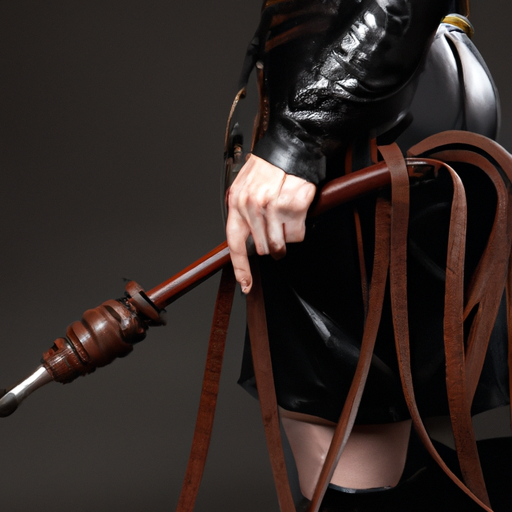In today’s society, traditional gender roles have long been ingrained in our cultural fabric. These roles often dictate how individuals should behave, both in their personal relationships and in society at large. However, as our understanding of human sexuality and relationships evolves, so too does our perception of gender roles. One such exploration is the realm of cuckold femdom, where the dynamics of dominance and submission take center stage. In this blog post, we will delve into the differences between traditional gender roles and the exploration of dominant and submissive roles in cuckold femdom, while also examining the ethical implications of such exploration.

To start, let’s first define traditional gender roles. These roles typically assign certain behaviors and expectations based on an individual’s biological sex. Men are often encouraged to be assertive, strong, and dominant, while women are expected to be nurturing, submissive, and compliant. These rigid expectations can limit personal growth and create a power imbalance within relationships.
In contrast, cuckold femdom challenges these traditional gender roles by embracing dominant and submissive dynamics in a consensual and ethical manner. In this context, the woman takes on a dominant role, often referred to as the ‘domme,’ while the man adopts a submissive role, known as the ‘cuckold.’ The domme exercises control and power over the cuckold, often engaging in activities such as humiliation, chastity, and cuckolding.
One key difference between cuckold femdom and traditional gender roles lies in the power dynamics. While traditional gender roles often perpetuate the idea of male dominance, cuckold femdom disrupts this dynamic by placing the woman in a position of power. This power shift challenges societal norms and provides an alternative narrative to the traditional gender roles.
Moreover, cuckold femdom emphasizes the importance of consent and communication. In a healthy femdom relationship, boundaries are established and respected, ensuring that both parties feel safe and fulfilled. This emphasis on consent and communication is what sets cuckold femdom apart from traditional gender roles, which often neglect the importance of open dialogue and mutual agreement.
Now, let’s address the ethical implications of exploring dominant and submissive roles in cuckold femdom. As with any exploration of sexuality, it is crucial to ensure that all parties involved are consenting adults. Consent must be ongoing and freely given, with the ability to withdraw consent at any time. It is essential to prioritize the emotional well-being of all individuals involved and to maintain open lines of communication to address any concerns or boundaries.
Furthermore, it is important to acknowledge that cuckold femdom is a consensual power exchange and should not be confused with non-consensual humiliation, abuse, or disrespect. The exploration of dominant and submissive roles should always be guided by respect, trust, and consent.
In conclusion, the exploration of dominant and submissive roles in cuckold femdom challenges traditional gender roles by empowering women and disrupting societal expectations. This alternative narrative promotes consent, communication, and mutual satisfaction, setting it apart from the power imbalances often associated with traditional gender roles. As with any exploration of sexuality, it is crucial to approach cuckold femdom with respect, consent, and a commitment to the emotional well-being of all parties involved. Extra resources.
What are some famous artists known for their femdom artwork?
Art has always been a medium for self-expression and exploration of various themes, including those that challenge societal norms and conventions. One such theme that has emerged in the art world is femdom, which stands for female dominance. femdom artwork portrays strong, dominant women in control of their male counterparts. While this genre may not be as widely recognized as others, there are a few famous artists known for their femdom artwork. In this blog post, we will explore the work of three artists who have made a significant impact in this unique genre.
Namio Harukawa: Namio Harukawa, a Japanese artist born in 1947, is often regarded as one of the pioneers of femdom artwork. His drawings depict voluptuous women dominating submissive men, often in playful or sensual scenarios. Harukawa’s art is characterized by intricate detailing, capturing the expressions and body language of both the dominatrix and the submissive. His work explores themes of power dynamics, gender roles, and the celebration of female strength. Although Harukawa’s work has faced criticism for its explicit nature, it has also gained a cult following, appreciating its boldness and unapologetic portrayal of female dominance.
Eric Stanton: Eric Stanton, an American artist born in 1926, is another prominent figure in the femdom art world. Stanton’s work often features dominant women in various forms of control, ranging from wrestling and bondage to sexual dominance. His illustrations showcase powerful women confidently exerting their authority over submissive male figures. Stanton’s art explores themes of female empowerment and challenges traditional gender roles. His work has had a significant influence on the fetish community, where it is celebrated for its explicit and daring depictions of female dominance.
Sardax: Sardax, a contemporary British artist, is known for his elegant and sophisticated femdom artwork. His illustrations often depict dominant women in lavish settings, exploring the dynamics of power and control. Sardax’s art is characterized by its attention to detail, intricate costumes, and the use of soft colors. His work often portrays a balance of sensuality and dominance, emphasizing the beauty and strength of the female form. Sardax’s artwork has gained recognition and popularity for its unique style and its ability to capture the essence of femdom in a refined and tasteful manner.
It is important to note that femdom artwork, like any other form of artistic expression, is subjective and may not be everyone’s cup of tea. While some may find it empowering and visually appealing, others may feel uncomfortable or offended by its explicit nature. It is crucial to respect individual preferences and boundaries when engaging with art.
In conclusion, femdom artwork has its place in the art world, challenging traditional gender roles and exploring themes of power dynamics and female empowerment. Artists like Namio Harukawa, Eric Stanton, and Sardax have made significant contributions to this genre, pushing boundaries and igniting conversations about sexuality, dominance, and self-expression. While their work may not be widely recognized in mainstream art circles, it has undoubtedly left an indelible mark on those who appreciate the boldness and creativity of femdom artwork.
